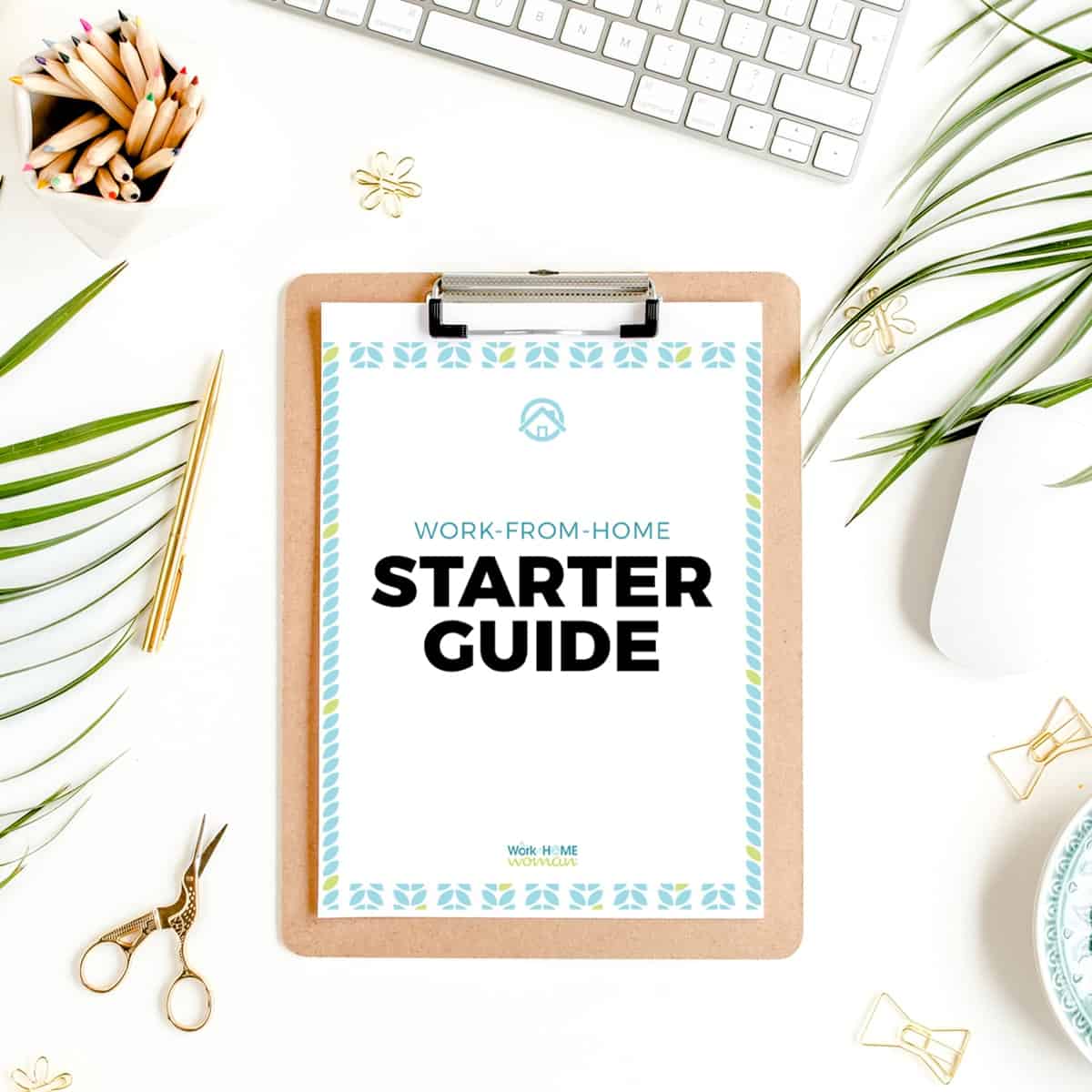Update: Medical transcription is no longer a work-from-home career that I recommend. Due to medical facilities using electronic medical records, the demand and pay rates for medical transcriptionists continues to decline. If you’re interested in working in a related field, I suggest general or legal transcription, becoming a medical scribe, or medical coding. This article has been left here for informational purposes only.

Are you a fast and accurate typist? Are you good at meeting deadlines? Do you have excellent listening skills? Then perhaps a home-based career as a medical transcriptionist is right for you.
What is Medical Transcription?
Medical transcription is the process of listening to audio files from medical professionals and transcribing them into written documents. Once the audio file is in written format, it becomes part of the patient’s permanent medical record.
There are also medical transcriptionists, called medical transcription editors or dictation editors, who correct and edit written reports generated by speech recognition software. So, when searching for medical transcription jobs, remember to search by all three terms.
Do You Need Special Training?
Note: I do not recommend investing money into this career path, as it is a dying career field.
While there’s not a license that is required to be a medical transcriptionist; individuals need to be familiar with medical terminology, anatomy and physiology, and medical reporting; plus, transcription companies prefer hiring professionals who are certified in the field. Most medical transcription training programs can be completed in as little as four to eight months. There are many community colleges and career institutions that offer medical transcription training – but the one I recommend is CareerStep.
CareerStep has an A+ rating with the Better Business Bureau, Dave Ramsey endorses them, and their program can be completed online in just four months. They also offer tuition assistance and special funding for military families, and they offer graduate support to help you land a job. Once you’ve completed your training, you’ll want to take the Registered Healthcare Documentation Specialist (RHDS) exam. This exam is voluntary and needs to be retaken every three years, but it’s a great way to establish your credibility in the field, especially when you’re starting out.
What Skills and Equipment Do You Need?
To make it as a medical transcriber, you’ll need to have top-notch listening skills, fast and accurate typing skills, and excellent written communication — after all, what you’re typing is going to be in someone’s medical record, and their life could depend on the information you’re transcribing.
Here’s some of the equipment you’ll need:
- Reliable computer or laptop
- High-speed internet connection
- Good quality headphones
- Transcription software and foot pedal to playback the audio files
Some hiring companies will supply the appropriate equipment needed for the job.
How Much Do Medical Transcriptionists Earn?
According to the Bureau of Labor Statistics (BLS), medical transcriptionists earn an average of $16.70 per hour or $34,730 annually. However, I’ve had many medical transcribers tell me they are making much less. Because medical facilities have moved away from paper documentation to digital medical records, the need for medical transcriptionists is rapidly declining.
The BLS says the job outlook for medical transcribers is expected to drop by 4% from 2022-2032. Over the years, not only has the demand for medical transcriptionists decreased, but the pay rates have also taken a nose dive. I do not recommend this career as it is a dwindling occupation.

Where Do I Find Medical Transcription Jobs?
Medical transcriptionists are generally hired by hospitals, medical offices, and administrative support companies. Here are some of the companies that regularly hire home-based medical transcriptionists:
Do You Want to Be a Freelance Medical Transcriptionist?
Like any other freelance business, you will need to educate yourself on the best business practices, file all of the appropriate paperwork, and get your legal and financial ducks in a row. Once you set up the preliminary business framework, you can start working on the fun parts of your business.
1. Create an Online Presence
Having a website as a medical transcriber isn’t necessary, but you should have an online presence that can help to attract more clients. Having a well-written LinkedIn profile is a good place to start, but you can also list your services on freelance portals like Upwork and Guru.
2. Educate Yourself
Even though you’ll have formal training as a medical transcriptionist, if you decide to go the freelance route, you’ll have a new set of skills and practices to learn. Skills like marketing, keeping track of your finances as a 1099 contractor, organization, and productivity — will all be part of your life as a freelancer. Be sure to brush up on these areas and join groups and organizations that can help you be successful.
Here are a few resources to check out:
- American Healthcare Documentation Professionals Group
- Association for Healthcare Documentation Integrity
- Medical Transcription For Dummies
3. Market Your Business
There are lots of ways to promote your medical transcription business, but the thing you need to remember is consistency is key. Choose a few methods that you think you’ll enjoy doing and spend time each day working on those methods. This post below covers nine ways to market yourself and get clients:
Medical Transcription Conclusion
If you enjoy typing and want to work in the medical field, working from home as a medical transcriptionist may be a viable option. Be sure to research the industry in-depth and reach out to local medical establishments to see if they still hire for these sorts of positions. It will also be beneficial to connect with other medical transcriptionists so that you can ask questions and find out more about this profession.
Good luck, and keep us posted!
Originally published February 25, 2009. The content was updated in September 2022.







I would like to get contact number
A contact number for what?
I have been a medical transcriber for over 20 years. I am interested in working from home.
Hey Holly, a quick question – should the person have a medical background to join the medical transcription field or can anyone join ?
Hi Steven,
Yes, you will need specialized training to learn the medical terminology if you don’t have a medical background. Most hiring companies require certification or past experience.
Hello
Kindly give me a list of transcription companies and or hospitals that hires home based MTs
Thank you
I have worked in the medical field since the age of 18. I am a former nurse w/medical issues that required me to leave nursing. How can I get started in the field of medical transcription?
Hi Jana,
Even though you already have a medical background, you will need to take a medical transcription course. CareerStep has a course that is online and self-paced. Another option is medical coding + billing.
Here is the story of one nurse who made the switch from nursing to coding and billing:
https://www.theworkathomewoman.com/medical-coding-and-billing/
There are also many companies that hire nurses for online and telephonic work:
https://www.theworkathomewoman.com/remote-jobs-nurses/
Good luck on your job search!
I have been a medical transcriptionist for 32 years, working out of my home for the last 10 years. Medical transcription is a dying field. I cannot, in good conscience, recommend going into this field. I give myself another 2 or 3 years and then I’m out of it for good.
Thanks for sharing your experience, Ann. I’ve heard that recently from other MTs. I’ve also heard some people say the field is evolving into MT editing. Have you seen that too?
I’m currently looking for work that can be done from home due to my care of an autistic child. I have internet access and a laptop but I’m not a fast typist by any means. Do I begin with improving my typing skills or go straight into a certification program?
Hi Stephanie,
I know with CareerStep’s Medical Transcription Program they teach you typing skills, correct grammar and punctuation, medical terminology and more, so I believe you can apply for a program right away. But it never hurts to get in some extra practice, and there are lots of free online typing programs.
Good luck!
what does it cost to train to be a medical transcriptionist
Hi Debbie, Through CareerStep it’s $2,999. They do offer discounts for military families and funding options.
can i still work in medical transcription with petty criminal background from years ago??
I’m not sure. I’d check into the qualifications in your state.
I recently graduated with a certificate from Ashworth College and am looking for an at-home position. I’ve applied at a number of places but no luck yet. Any thoughts? I want to be able to be flexible.
Hi Ilene, Have you tried the companies mentioned above? What about FlexJobs?
Hi I have done my bachelors in homoeopathy medicine and surgery.I have work experience of 2 yrs as medical claims officer in a health insurance company.I’m interested in working from home as medical transcriptionist
Thanks & Regards,
Manisha
Hi! I am working as a medical transcriptionist for 11 years and i am currently looking for a homebased MT job. Can you recommend me where to apply. Thank you.
Have you tried the companies listed above? Here are a couple of articles that should be helpful too:
https://www.theworkathomewoman.com/get-medical-transcription-clients/
https://www.theworkathomewoman.com/find-work-at-home/
You may also want to try FlexJobs: http://flexjobsrocks.go2cloud.org/SHP3 (aff link)
I am wanting to become a medical transcriptionist but I don’t have any background in medical courses. Can I still work with you? regardless of the background? I want to work from home using my laptop during my spare time. I don’t have any work as for now but I want to earn money as a medical transcriptionist. If I’m not qualified can you suggest any work from me? that can earn money? I’m
waiting for your response. Thank you.
Hi Aileen, You need to have formal training to work at a medical transcriptionist. Have you thought about general transcription work? Check out this post for details: https://www.theworkathomewoman.com/wah-transcriptionist/
if I were to become a medical transcriptionist and work from home. do they require one to attend any kind of meetings or interviews in person or can that all be done online or over the phone? Thanks!
This is something you would need to ask the company in your interview.
Are they phone interviews or do I have to do them in person? Thanks!
I would assume they are over the phone or via a video conferencing platform, but I’m not 100 percent certain. You will need to ask when the time approaches.
I am wanting to get involved with Medical Transcription work from home as I definitely have all the requirements to fulfil this task. Besides coming from a Medical (Nursing) background, I have worked extensively I the Medical Field all my life. I have until last year June 2016, been the Admin Co-Ordinator at a Private Psychiatric Clinic, heading up the Admin department, I am totally comfortable with Medical terminology and coding, so feel this would be an ideal opportunity for me to start a home based career in Medical Transcription work. I am however a resident of South Africa so not sure if your site offers any leads for us here.
The Work at Home Woman is geared for U.S. residents.
Check out this post for global jobs:
https://www.theworkathomewoman.com/worldwide-work-from-home-jobs/
I have been a medical transcriptionist for 10 years now, but I am based in the Philippines. Can you give me leads/tips as to how I can find direct clients/doctors? I can cover a wide range of specialties.
Hi Lily, Take a look at this post, it has some helpful tips for finding clients: https://www.theworkathomewoman.com/get-medical-transcription-clients/
Thank you for your reply. If you are in the medical transcription field and are looking into the possibility of hiring freelance transcriptionists, please shoot me an email so we can discuss terms. I will be glad to work for you. :)
Hi Lily, The Work at Home Woman is not a hiring agency, but a career resource for job leads, ideas, and information. Please follow up directly with companies that are listed on the website.
Hi,
I have 5 years of experience as a medical transcriptionist. Kindly let me know home based opportunities.
Regards,
Vinutha
I want learn medical transcription. Is certification compulsory for this. Please help me to start with it.
For the most part yes, you will need to complete a certification program or an associate’s degree to work as a medical transcriptionist. One exception to this rule is if you have healthcare experience (such as a nursing degree) and you’re proficient at transcription — you may be able to work as an MT.
I’ve worked as MT for 15 years but not for last five. How do I get in to working at home? I did it at home, but for local doctors.
Hi Donna,
You can still approach local hospitals and doctors to see if they have any vacancies. You can also try the companies listed above too. If neither of those options pans out, you can try getting a paid FlexJobs’ membership: http://flexjobsrocks.go2cloud.org/SHmB (affiliate link).
With FlexJobs, they hand-screen all of their listings, so you never have to worry about scams. They also have a fairly big selection of Medical Transcription jobs — when I searched there were 20 different hiring companies.
Good luck and keep me posted!
I am a nurse and and had six months of experience in medical coding. As I a working in hospital, I would like to do medical transcription as a part time work
Do you have transcription experience? Most companies make you take an accuracy test.
How can work from home as a medical transcriptionist. I am interested in this field.
You’ll need to take a training course. Have you checked out CareerStep?
What about courses taken during college? will they suffice?
I went to school for Medical assisting for 2 years back in 2010, reaching completion but had to discontinue attending :( but in that time I completed courses such as Medical terminology, anatomy and physiology, Healthcare Reimbursement/billing, Medical office systems, electronic records; etc.
Will that get me anywhere at all?
It may suffice. You will need to follow up with individual companies to see what their qualification requirements are. Good luck!